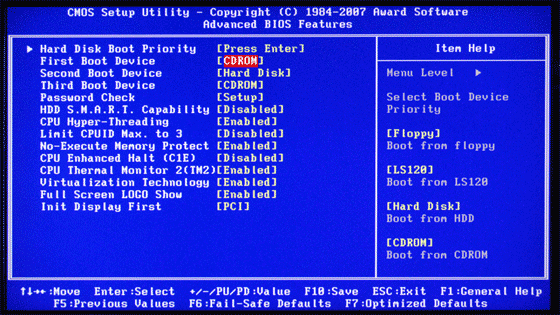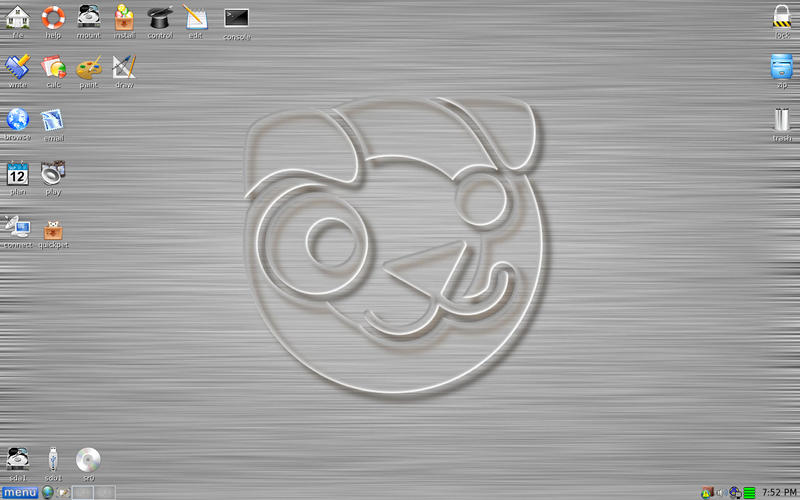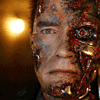I have an old Gateway desktop that my nephew put together for me several years ago and it just started having issues. It would click off and boot me off of the system. At first, it would let me choose Vista and start normally, but the Windows green line would just keeping going around and around. Nothing would happen. Now, it won't even let me get that far. When I turn the computer on, it goes to a black screen with white writing (sorry, I know next to nothing about computers) and says "Windows failed to start - insert installation disk" but I don't have the disk. When I pressed Enter to escape, it went to "Loading Windows Files" and stops at "Loaded: \Windows\system 32\DRIVERS\null.sys" it just sits there until I turn off the computer. At other times, it will give me something like (I can't remember exactly what it says)... \ DBH and a circle comes on then stops and says to insert reboot disk. I hope someone can assist me. I am a grandma of five - going to school online - and all my school, personal, and writing stuff is on this computer. Even if I can just get on long enough to put some of it on a thumb drive I just went and purchased (like my grandkids pictures and my novels (writing). Thank you in advance. I appreciate the help so much.
Vista system on Gateway desktop won't boot
#1

 Posted 08 April 2015 - 04:42 PM
Posted 08 April 2015 - 04:42 PM

#2

 Posted 09 April 2015 - 06:17 AM
Posted 09 April 2015 - 06:17 AM

![]()
Sounds like Windows has become damaged/corrupted however a damaged HDD can also cause Windows to produce the same message if any required files cannot be accessed due to an area of the disk being unreadable, trying to recover your data is quite rightfully a priority and you can use Puppy Linux for this, details below;
TIP
To ensure that you receive notification of any reply to your topic please click on the Follow this topic tab at the upper right corner of the page.
===================
***Required Hardware***
CD Burner (CDRW) Drive,
Blank CD,
Extra Storage Device (USB Flash Drive, External Hard Drive)
===================
1. Save these files to your Desktop/Burn Your Live CD:
- Download Latest Puppy Linux ISO (i.e.: lupu-528.iso)
Download BurnCDCC ISO Burning Software
There are instructions on how to boot from flash drive with puppy here; http://www.pendrivel...e-from-windows/
- Open BurnCDCC with Windows Explorer
- Extract All files to a location you can remember
- Double Click
 BurnCDCC
BurnCDCC
- Click Browse
and navigate to the Puppy Linux ISO file you just downloaded
- Open/Double Click that file
IMPORTANT: Adjust the speed bar to CD: 4x DVD: 1x
- Click Start

- Your CD Burner Tray will open automatically
- Insert a blank CD and close the tray
- Click OK
2. Set your boot priority in the BIOS to CD-ROM first, Hard Drive Second
-
- Start the computer/press the power button
- Immediately start tapping the appropriate key to enter the BIOS, aka "Setup"
(Usually shown during the "Dell" screen, or "Gateway" Screen)
- Once in the BIOS, under Advanced BIOS Options change boot priority to:
CD-ROM 1st, Hard Drive 2nd
- Open your ROM drive and insert the disk
- Press F10 to save and exit
- Agree with "Y" to continue
- Your computer will restart and boot from the Puppy Linux Live CD

3. Recover Your Data
- Once Puppy Linux has loaded, it is actually running in your computer's Memory (RAM). You will see a fully functioning Graphical User Interface similar to what you normally call "your computer". Internet access may or may not be available depending on your machine, so it is recommended you print these instructions before beginning. Also, double clicking is not needed in Puppy. To expand, or open folders/icons, just click once. Puppy is very light on resources, so you will quickly notice it is much speedier than you are used to. This is normal. Ready? Let's get started.
3a. Mount Drives
- Click the Mount Icon located at the top left of your desktop.

- A Window will open. By default, the "drive" tab will be forward/highlighted. Click on Mount for your hard drive.
- Assuming you only have one hard drive and/or partition, there may be only one selection to mount.
- USB Flash Drives usually automatically mount upon boot, but click the "usbdrv" tab and make sure it is mounted.
- If using an external hard drive for the data recovery, do this under the "drive" tab. Mount it now.
3b. Transfer Files.
-
- At the bottom left of your desktop a list of all hard drives/partitions, USB Drives, and Optical Drives are listed with a familiar looking hard drive icon.
- Open your old hard drive i.e. sda1
- Next, open your USB Flash Drive or External Drive. i.e. sdc or sdb1
- If you open the wrong drive, simply X out at the top right corner of the window that opens. (Just like in Windows)
- From your old hard drive, drag and drop whatever files/folders you wish to transfer to your USB Drive's Window.
For The Novice: The common path to your pictures, music, video, and documents folders for XP is: Documents and Settings >> All Users (or each individual name of each user, for Vista and above C:\Users\$USERNAME\[...]. CHECK All Names!) >> Documents >> You will now see My Music, My Pictures, and My Videos.
Remember to only click once! No double clicking! Once you drag and drop your first folder, you will notice a small menu will appear giving you the option to move or copy. Choose COPY each time you drag and drop.
YOU ARE DONE!!! Simply click Menu >> Mouse Over Shutdown >> Reboot/Turn Off Computer. Be sure to plug your USB Drive into another working windows machine to verify all data is there and transferred without corruption. Congratulations!

Similar Topics
0 user(s) are reading this topic
0 members, 0 guests, 0 anonymous users
As Featured On:














 Sign In
Sign In Create Account
Create Account

